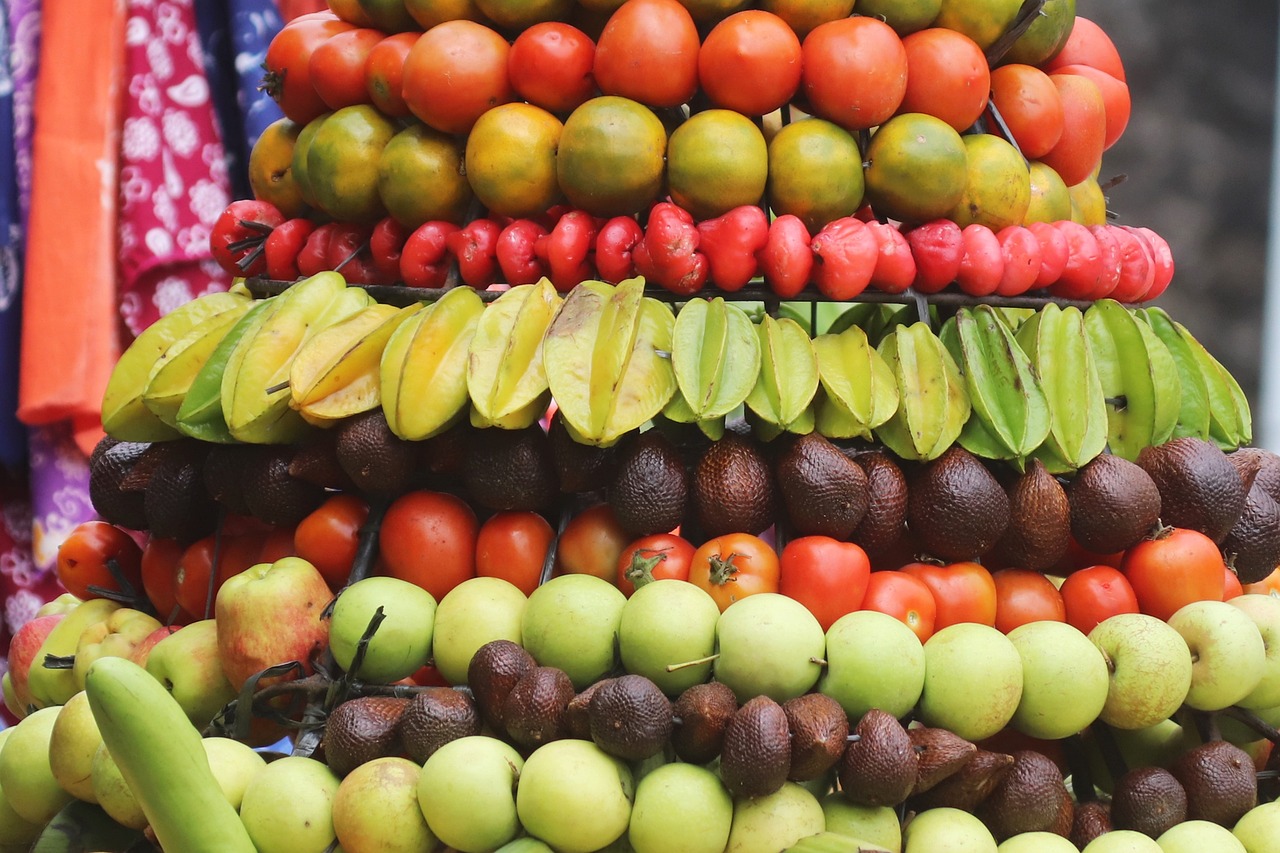Discovering the Flavors of Traditional Indonesian Satay
Indonesian satay, a culinary gem that encapsulates the vibrant flavors and diverse heritage of Indonesia, is a dish that has captured the hearts and palates of food enthusiasts worldwide. This iconic dish, consisting of skewered and grilled meat served with a delectable sauce, offers a sensory explosion of taste and aroma that is truly unforgettable. Each bite of Indonesian satay is a journey through the rich tapestry of Indonesian cuisine, showcasing the unique blend of spices, ingredients, and cooking techniques that make it a beloved delicacy.

History of Indonesian Satay
The history of Indonesian satay is a fascinating journey that dates back to ancient times, rooted in the culinary traditions of Java and Sumatra. This iconic dish has evolved over centuries to become a beloved staple in Indonesian cuisine, reflecting the diverse influences that have shaped the country's food culture. Satay, with its origins in the street food scene of Indonesia, has become a symbol of the nation's culinary heritage, showcasing the creativity and ingenuity of Indonesian cooks.

Regional Variations of Satay
When it comes to Indonesian satay, one cannot overlook the fascinating regional variations that add a unique touch to this beloved dish. Each region of Indonesia boasts its own distinct flavors and cooking styles, making the exploration of satay an exciting culinary journey.
In Bali, satay takes on a sweet and spicy profile that tantalizes the taste buds with a harmonious blend of flavors. The use of fresh herbs, chili, and coconut milk creates a vibrant and aromatic satay experience that reflects the lush tropical landscape of the island.
On the island of Java, Javanese satay stands out for its subtle and refined taste. The meat is marinated in a delicate mixture of sweet soy sauce and fragrant spices, resulting in tender skewers bursting with flavor. This variation showcases the intricate balance of Javanese culinary traditions.
Meanwhile, Sumatran satay offers a bold and fiery flavor profile that appeals to spice enthusiasts. Rich coconut milk, lemongrass, and fiery chili peppers are key ingredients in this variation, reflecting the diverse ethnic influences that have shaped Sumatran cuisine over the centuries.
Exploring the regional variations of Indonesian satay not only reveals the diverse culinary landscape of the archipelago but also highlights the creativity and ingenuity of Indonesian chefs in reinventing this classic dish. Whether you prefer the sweet heat of Balinese satay or the robust flavors of Sumatran satay, each regional variation offers a delicious glimpse into the rich tapestry of Indonesian cuisine.

Javanese Satay
Javanese Satay is a culinary delight that embodies the essence of Indonesian cuisine. Originating from the island of Java, this variation of satay is renowned for its subtle yet complex flavors that tantalize the taste buds. The hallmark of Javanese satay lies in the meticulous marination process, where tender meat is infused with a harmonious blend of sweet soy sauce, shallots, garlic, and a medley of aromatic spices.
One of the key characteristics of Javanese satay is its tender and succulent meat, often sourced from high-quality cuts of chicken, beef, or lamb. The use of kecap manis, a sweet soy sauce, imparts a caramelized richness to the meat, while the addition of ingredients like coriander, cumin, and turmeric adds depth and complexity to the flavor profile.
Furthermore, Javanese satay is typically accompanied by a side of lontong (compressed rice cakes) and a generous serving of peanut sauce, creating a harmonious balance of flavors and textures. The interplay of savory, sweet, and umami notes in each bite showcases the culinary expertise and cultural heritage of Java, making it a beloved dish both locally and internationally.

Balinese Satay
Balinese Satay, originating from the vibrant island of Bali, offers a unique culinary experience that tantalizes the taste buds with its bold and exotic flavors. This variation of Indonesian satay is distinguished by its rich blend of fresh herbs, fiery chili, and creamy coconut milk, creating a harmonious explosion of taste in every bite. The cultural significance of Balinese satay is deeply rooted in the island's traditions, reflecting the diverse influences that have shaped Bali's culinary landscape over the centuries.

Sumatran Satay
Sumatran Satay is a culinary delight that embodies the bold and fiery flavors of the region. This variation of Indonesian satay is renowned for its robust taste, thanks to the use of rich coconut milk, lemongrass, and fiery chili peppers. The fusion of these ingredients creates a tantalizing combination that sets Sumatran satay apart from other regional varieties.
Sumatra's diverse ethnic groups have each contributed their own unique touch to the flavors of Sumatran satay, resulting in a rich and complex taste profile. The marinade, usually made with a blend of coconut milk and a fiery chili paste, infuses the meat with a spicy kick that leaves a lasting impression on the palate.
When it comes to Sumatran satay, the grilling process is crucial in achieving the perfect balance of char and smokiness. The skewers are expertly grilled over an open flame, allowing the flavors to intensify and the meat to become tender and succulent. This traditional cooking technique enhances the overall taste experience of Sumatran satay, making it a favorite among food enthusiasts.

Key Ingredients in Satay
When it comes to creating the authentic and irresistible flavors of Indonesian satay, the key lies in the carefully selected ingredients that come together to form a harmonious blend of taste and aroma. Turmeric, with its vibrant color and earthy flavor, plays a central role in marinating the meat, infusing it with a rich and aromatic essence that is quintessential to satay. Lemongrass, another staple ingredient, adds a refreshing citrusy note that cuts through the richness of the meat, creating a balanced and flavorful profile.
Galangal, a close relative of ginger, brings a unique peppery and floral undertone to the marinade, enhancing the overall complexity of flavors in Indonesian satay. The combination of these aromatic spices, along with shallots, garlic, and coriander, forms the backbone of the marinade that transforms simple skewered meat into a culinary masterpiece.
When it comes to protein, Indonesian satay offers a wide range of options, including succulent chicken, tender beef, flavorful lamb, and even exotic choices like rabbit or seafood. Each type of meat brings its own distinct flavor profile to the dish, allowing for endless variations and culinary exploration.
Vegetables also play a crucial role in Indonesian satay, either as accompaniments to the skewers or as part of the marinade. Bell peppers, onions, and tomatoes are commonly threaded onto the skewers alongside the meat, adding a burst of color and freshness to each bite. Additionally, ingredients like coconut milk and peanut sauce provide a creamy and nutty contrast to the savory grilled meat, elevating the dish to a whole new level of indulgence.

Cooking Techniques for Satay
When it comes to mastering the art of preparing Indonesian satay, understanding the cooking techniques is essential to achieving that perfect balance of flavors and textures. The process of creating delicious satay involves a combination of marinating, grilling, and serving techniques that have been honed over generations.
One of the crucial steps in preparing satay is the marination process. The meat, whether it be chicken, beef, or lamb, is typically marinated in a mixture of soy sauce, kecap manis (sweet soy sauce), garlic, ginger, and a blend of aromatic spices. This marinade not only infuses the meat with flavor but also helps tenderize it, ensuring a juicy and succulent end result.
After marinating, the meat is skewered onto bamboo sticks or metal skewers, ready to be grilled over charcoal or an open flame. The key here is to achieve the perfect char on the outside while keeping the meat tender and juicy on the inside. This requires careful attention and skill to control the heat and cooking time, ensuring that the meat is cooked through but not overdone.
During the grilling process, basting the satay with the remaining marinade or a mixture of coconut milk and spices adds an extra layer of flavor and helps keep the meat moist. The smoky aroma that arises from the grilling meat is a tantalizing sign that the satay is almost ready to be served.
Once the satay skewers are cooked to perfection, they are typically served with a side of rice cakes, sliced cucumbers, and a dipping sauce, such as peanut sauce or sambal. The combination of flavors and textures in each bite, from the tender meat to the crunchy cucumber and creamy peanut sauce, creates a harmonious culinary experience that is truly unforgettable.
Whether you are grilling satay over an open flame in a traditional Indonesian kitchen or using a modern barbecue grill, mastering these cooking techniques will elevate your satay game and impress your friends and family with a taste of Indonesia's rich culinary heritage.
Frequently Asked Questions
- What is Indonesian satay?
Indonesian satay is a popular dish consisting of skewered and grilled meat, typically served with a flavorful sauce. It is a traditional Indonesian culinary delight enjoyed by people worldwide.
- What meats are commonly used in Indonesian satay?
Indonesian satay can be made with various meats such as chicken, beef, lamb, or even seafood like shrimp. Each type of meat brings its own unique flavor and texture to the dish.
- How is Indonesian satay typically served?
Indonesian satay is often served with steamed rice, lontong (rice cakes), or wrapped in a warm, soft flatbread. It is accompanied by a range of condiments and sauces, adding layers of taste to the dish.
- Are there vegetarian or vegan versions of Indonesian satay?
Yes, there are vegetarian and vegan versions of Indonesian satay that use ingredients like tofu, tempeh, or a variety of vegetables as the main protein source. These plant-based alternatives are equally delicious and satisfying.
- Can I make Indonesian satay at home?
Absolutely! Indonesian satay is a dish that can be easily prepared at home with the right ingredients and cooking techniques. You can experiment with different marinades and sauces to create your own unique twist on this classic dish.



















